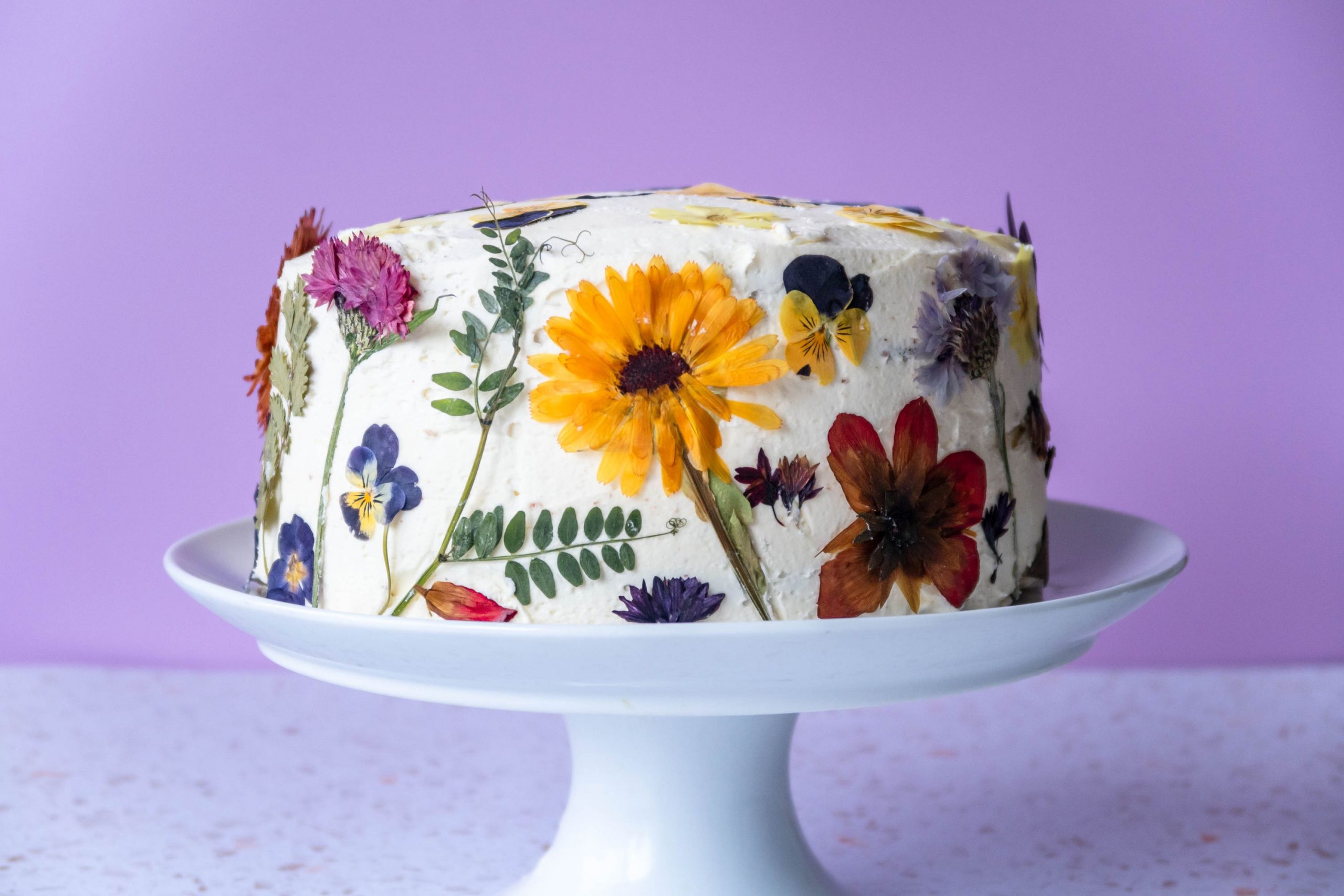How to grow your own edible flowers for cakes, bakes and cocktails
The pretty petals in your garden will keep bees happy too.
As edible flowers continue to grace the plates of TikTok and Instagram influencers, it’s time to get in on the act.
The petals are being used to decorate cakes and loaves, garnish weekend cocktails and make pretty ice cubes. Many have a unique taste, from the almond flavour of hawthorn to the subtle spicy notes of cornflower.
View this post on Instagram
But most important to the gardener is that growing these nectar-rich edibles can provide nourishment for bees too.
“Growing them can help to feed pollinating insects like honey bees all year round. Without pollinators, around 30% of the crops we consume wouldn’t make it to our plates,” says Hanenne Madi, brand manager at Rowse Honey, whose Hives For Lives programme of initiatives aims to support bees and beekeepers.
To help you navigate the best nectar-rich blooms to plant and pick in every season, gardening expert Michael Perry, aka Mr Plant Geek, offers this guide to planting and foraging edible flowers in your garden:
Spring flowers

Chive flowers decorate beetroot salad
Chive blossoms – I love the gentle onion taste that these flowers give. Perfect as a garnish for salads or scrambled eggs. They’re easy to grow, even in a window box. Sow in March for early puff balls of flowers in May.
Crab apple tree blossoms – Remember that many spring blossoms are edible and these will be one of the first edible blooms in the year. Crab apples are perfectly safe to eat, and while tart, you can make some delicious recipes with them like crab apple wine and crab apple pie. If you’ve only got a patio, why not try a dwarf variety? I’d recommend planting during the winter months. By early spring you should start to see pretty blossoms surrounded by happy pollinators.
Hawthorn – The blossom of hawthorn is often used in cooking, but don’t forget the foliage is also edible which has a nutty taste when young. In the autumn, the berries are also useful in the kitchen for jams and jellies. Hawthorn grows best in sunny conditions and is tolerant of all soil types. Best planted in the winter. Expect blossoms by late spring.
Summer flowers
View this post on Instagram
Cornflower – Bees and pollinating insects love the electric blue of the traditional cornflower. It’s also edible and adds an injection of colour to any baking and is ideal for decorating cakes. Sow the seeds in April for flowers by July.
Elderflower – The perfect flower for making cordial. Forage your own in the wild or grow yourself from a great range of cultivated varieties. Elderflowers are ready around mid-May to mid-June and are best planted in winter.
French marigolds – This childhood favourite is edible, and the petals can look decorative on cakes. Easy to grow from seed or you can buy plants at your local garden centre. French marigolds have little helicopter pads for bees to land on and feast on the nectar. Sow in spring for flowers by July.
View this post on Instagram
Lavender – A pollinator favourite, it can be used in baking to decorate cakes. For something a bit different, try a lavender latte. Super easy to grow, they prefer Mediterranean conditions, so keep them on the dry side.
Borage – The cool blue colours of borage are perfect for cocktails and also add a cucumber flavour to salads, as do the leaves. Very easy to grow from seed, and will self-set too, meaning you don’t need to re-seed each year. Bees adore the flowers of borage, as it’s an essential nectar source.
Sow in April and May for flowering from June through to November, sometimes even lasting into early winter.
Autumn flowers
View this post on Instagram
Nasturtiums – Probably the most well-known of all edible flowers, they are easy to grow in any soil type. Use the flowers, leaves and unripe seeds in the kitchen to add some surprise and delight to your recipes. Sow in the spring for flowers all the way through to October.
Dahlias – Dahlia petals are edible and can be used to add a flush of colour to salads, while the tubers can also be eaten. Bees buzz around for nectar, preferring the single blooms. Plant in May and June for flowers all the way until November, providing a late source of nectar for pollinating insects.
Winter flowers
Primroses – An essential nectar source for bees during the colder months, the primrose is also a deliciously edible flower for us. I think the classic yellow colour looks amazing on top of cakes. Very easy to grow. Plant in September, in a shady corner.
Violas – Violas are a miniature pansy, and the flowers are perfect for decorating your favourite bakes. These cool season bloomers can remain in bloom throughout the winter.
View this post on Instagram
Edible flower expert Erin Bunting, co-founder and head of cooking at The Edible Flower says: “Pressed flowers are so delicate they make a perfect garnish for little canapes and tartlets. You can press them when the flowers are in season and then store them for months, meaning you can use them for your special occasions throughout the year.”
The Press Association
Latest posts by The Press Association (see all)
- Best places to see bluebells this spring - April 11, 2025
- 6 foods that are great for your heart health - April 8, 2025
- Award-winning actors to star in Second World War film released for VE Day - April 8, 2025
- King Charles and Queen Camilla release official 20th wedding anniversary photographs - April 7, 2025
- The 5 ways drinking alcohol can affect your body - April 7, 2025




















